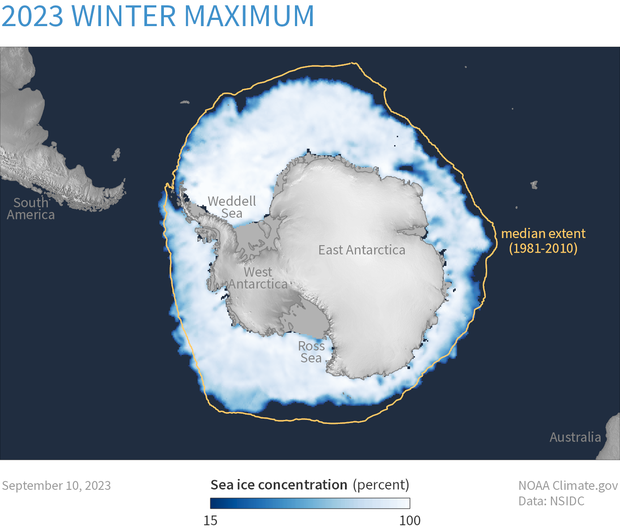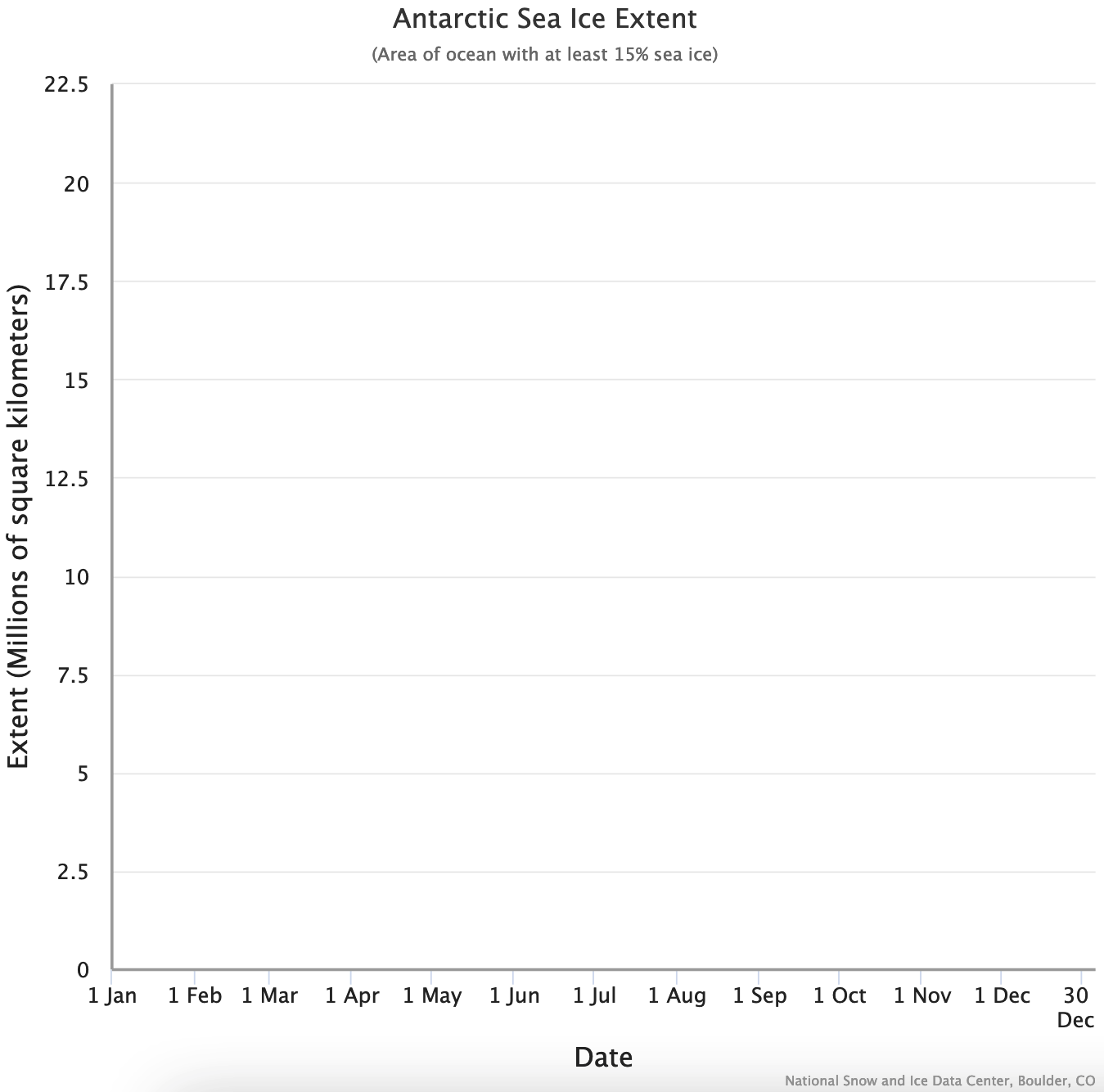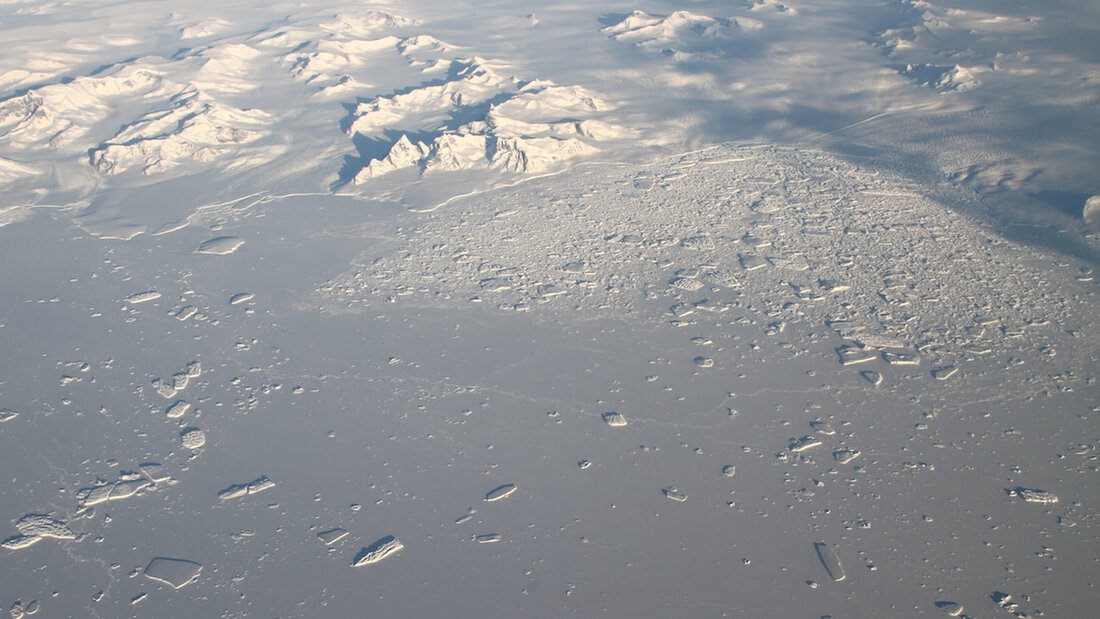In September 2023, the Antarctic sea ice winter maximum fell so far below the long-term average for that time of year—and below the previous record-low maximum extent—that sea ice scientists were compelled to find an explanation.
Sea ice concentration around Antarctica on September 10, 2023, the date of the winter maximum ice extent. The ice extent—the total area where the ice cover is at least 15 percent—was the lowest on record by a wide margin. NOAA Climate.gov map, based on data from the National Snow and Ice Data Center.
In contrast to the Arctic, which has shown a long-term sea ice decline linked to climate change, Antarctic sea ice has historically shown a minimal long-term trend with high year-to-year variation. Scientists have largely attributed Antarctic sea ice behavior to natural variability. This difference between the Arctic and Antarctic isn’t surprising; the poles have very different geography, and the Southern Hemisphere is warming more slowly than the Northern Hemisphere.
Beginning in 2016, however, Antarctic sea ice extent has mostly fallen below the 1981-2010 average, setting consecutive record low summer extents in early 2022 and 2023. Then in the austral winter of 2023, sea ice extent went off the rails—at one point falling more than 2 million square kilometers below the long-term average. Did 2016 mark the beginning of a downward trend, a regime shift? And did the gob-smacking 2023 low accentuate that trend?
Daily ice extent around Antarctic in 2023 to date (dark red) compared to all years from 1979–2012 (light gray), years from 2013–2015 (blue), and years from 2016–2022 (light red). The annual winter maximum ice extent around Antarctica has been highly variable in the past decade, with some years above average and others below average. The 2023 record low, however, is far outside the range of previous natural variability. Animation by National Snow and Ice Data Center.
A study published in May 2024 offers an explanation. Study authors compare two model experiments, one with and the other without global warming. The model runs rarely resulted in the extreme 2023 low—indicating it was an exceptionally rare event—although incorporating anthropogenic climate change increases the odds. Still, questions remain about how well models capture real-world sea ice behavior.
The study uses the latest generation of Coupled Model Intercomparison Project (CMIP) climate models, to see how easy (or hard) it is to simulate the 2023 event. The study’s lead author, Rachel Diamond, a Ph.D. student with the British Antarctic Survey, explains, “CMIP6 is an international project that involves many different climate models from different countries, and they all run a set of identical simulations, so that we can compare results between all these different models.”
Diamond and her coauthors used the results of 18 CMIP models, examining long-term global climate simulations with and without human-caused climate change. The models simulated an ice extent as low as the 2023 event once every 2,650 years when accounting for known natural variability alone; strong climate change would shorten the time interval to 580 years. These changes suggest that warming due to human-produced greenhouse gases made the odds of 2023’s record-low ice extent four times more likely.
The study shines a light on the distance between the 2023 event and what commonly used climate models say is “normal,” but it also raises questions. In an email conversation, Walter Meier, Mark Serreze, and Ted Scambos of the University of Colorado Boulder have expressed some skepticism that such a rare event—occurring only once in several centuries—would manifest in less than 50 years of continuous satellite monitoring. They agree with the study authors that models might underestimate the variability of the ice-ocean-climate system, or the impacts of warming.
In 2012, when Antarctic sea ice was slightly above the 1981-2010 average, NASA’s Operation IceBridge captured a multitude of photos of Antarctic sea ice. This photo shows snow-blanketed sea ice that holds fast to the Antarctic coast. Credit: NASA Scientific Visualization Studio
“Models aren’t perfect, but they’re still one of the best tools available to do these kinds of estimates, given the relatively short satellite record,” Diamond responds. The estimates she and her coauthors have produced have uncertainty ranges attached. The 2,650-year estimate has an uncertainty range of 1,530 to 6,260 years (natural variability alone); the 580-year estimate has an uncertainty range of 300 to 1,120 years (incorporating strong warming). “Although the uncertainty ranges on these estimates are fairly large, we want to highlight the significant reduction in the return period, and a lack of overlap of their respective uncertainty ranges,” she continues.
In other words, even if the models underestimate the natural occurrence of an event as extreme as 2023, the influence of climate change could be proportionally right. Diamond emphasizes this point. “So the key messages,” she says, “are that: a reduction like we saw in 2023 is likely a very rare event, but it is made more likely by strong climate change.”
Meanwhile, Antarctic sea ice is on a trend that is mimicking last years’ austral summer, though less extreme. Diamond cautions that the new study does not predict future sea ice behavior, but adds, “However, our study does suggest that, according to the models, the mean state of sea ice for the next few decades will probably be lower than before.”
Meier, Serreze, and Scambos find the likelihood of lower extents in the coming decades quite plausible. They write, “Given that these low extents occurred alongside record highs in both global air and global ocean temperatures, it is unlikely that the system is not already responding in some way to climate change.“
Diamond adds, “Sea ice is vital for Antarctic ecosystems and the survival of species like penguins. But Antarctic sea ice is affected by many different factors, so even though it’s so important, there are still things we don’t fully understand about it.”


